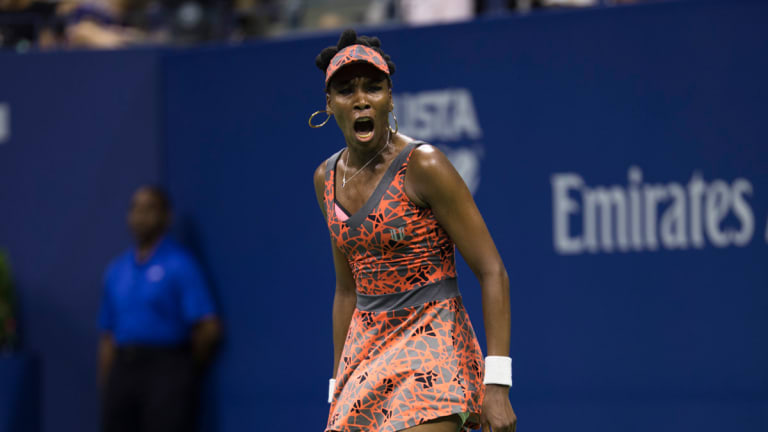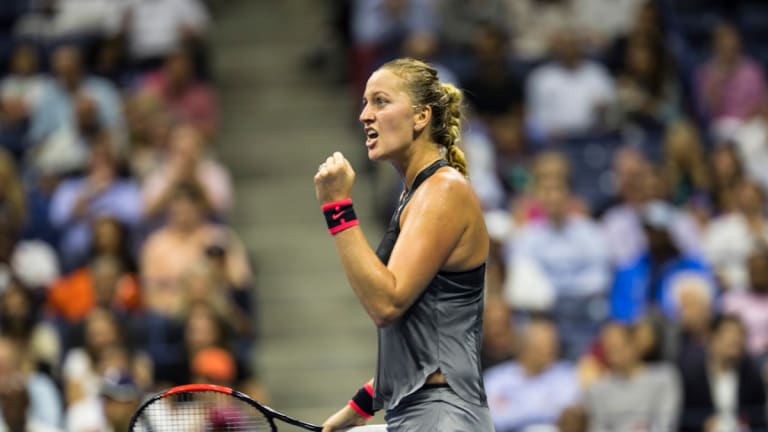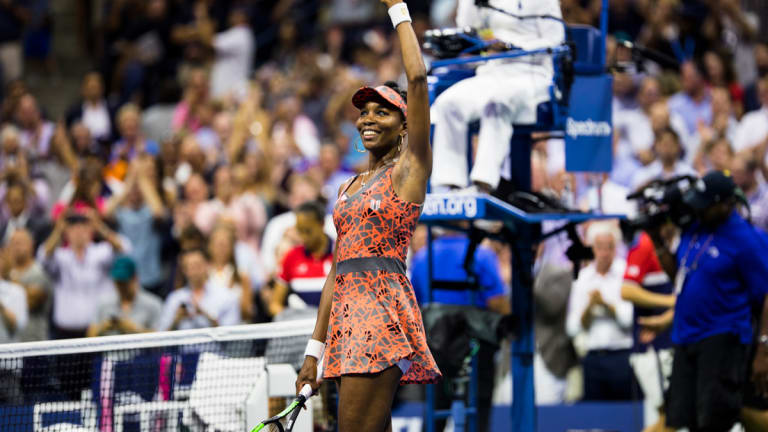NEW YORK—If any tennis promoters out there are looking to start a two-player barnstorming tour, they might want to consider booking Venus Williams and Petra Kvitova. These two women, it seems, can’t play a bad match.
All six of their previous meetings had gone three sets. The last three had either ended in a third-set tiebreaker or 7-5 in the third. And their most recent encounter, at Wimbledon in 2014, was one of the best of its year, a taut, tense, mesmerizing affair between two power players throwing thunderbolts back and forth on Centre Court.
As you might guess, expectations were high for their night-session quarterfinal here on Tuesday. The near-capacity crowd was largely present and accounted for at 7:00, when the match was scheduled to begin, and they were ready to explode for the tournament’s sentimental favorite, the 37-year-old Williams.


